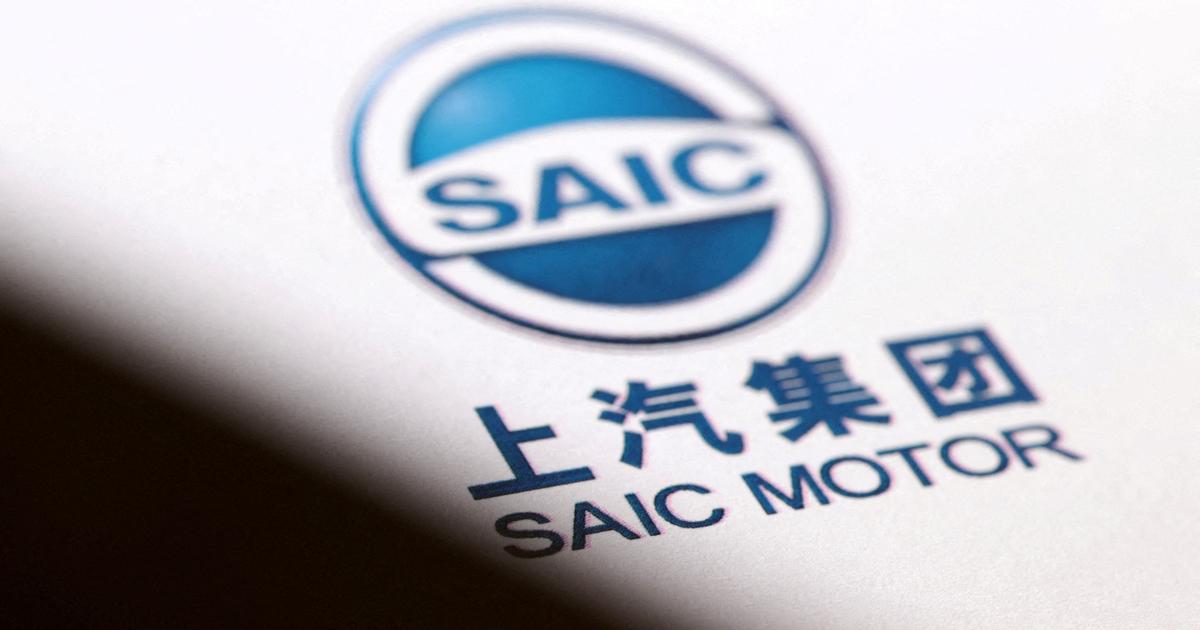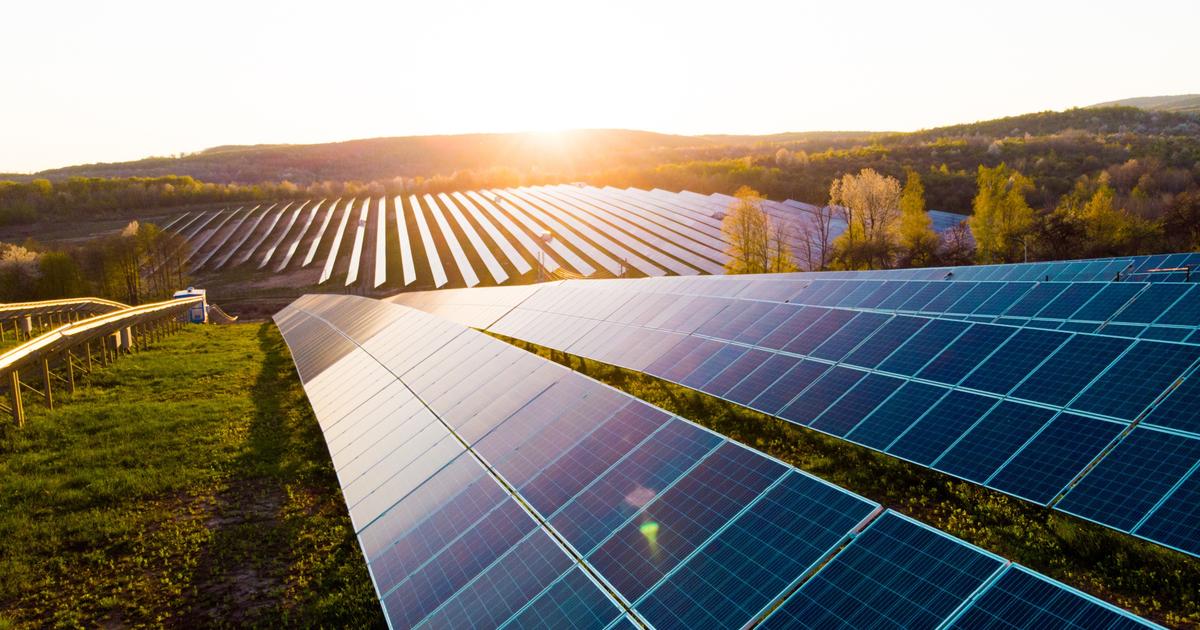Enlarge image
Containers as far as the eye can see
: the second lockdown month at the world's largest container hub is thwarting the plans of many companies.
The problem: Shanghai can hardly be replaced for maritime shipping.
Photo: Aly Song / REUTERS
Mr. Lepperhoff, Shanghai is going into the corona lockdown for the second month and is imposing curfews on millions of people. Germans in the city are still reporting a difficult supply situation. Videos on the Internet show the plight of the people and a spooky atmosphere in China's economic metropolis. How are your colleagues on site coping with the situation?
Patrick Lepperhoff
: Our colleagues from Shanghai have been working largely from home since the beginning of the pandemic, and collaboration on our projects is now working normally even in lockdown.
So far we have not heard anything about supply bottlenecks in your case.
In this difficult situation, we hope that the daily cooperation and familiar professional life will give stability to our team in Shanghai.
In Europe, there are also concerns about the stability of supply chains, intermediate products and rising prices. What is the current situation at the world's largest container hub?
Hundreds of ships are still waiting in front of the ports to be cleared.
The ports work because workers are not allowed to leave the site for loading and unloading and sleep in emergency shelters.
However, the transport to and from the port is massively delayed due to the lockdown.
There are no truck drivers who transport containers.
On top of that, they are still struggling with additional official requirements.
Compared to the situation before the lockdown, the truck transport volume has decreased by almost half.
This significantly increases the waiting times of the ships.
It is currently not foreseeable when this traffic jam will clear up.
Even after the end of the lockdown, it will take weeks for all waiting ships to be unloaded and loaded because the capacities in the port cannot be expanded at will.
The Hapag-Lloyd shipping company, which claims that a quarter of its liner services are linked to Shanghai, is trying to switch to other ports. If more ships followed suit, could that ease the situation?
This will contribute to a slight relaxation.
However, the alternative ports are not designed for these volumes in terms of infrastructure and resources.
In addition, pre-carriage and on-carriage have to be organised, i.e. the products have to be delivered to the other ports and transported away from there instead of to Shanghai.
This leads to additional costs and high operational complexity.
There is another reason why the Shanghai location is not so easy to replace for maritime shipping.
More than 3,000 cargo ships called at the port in March just to refuel.
The sea freight transport is not only under pressure because of the recent developments in Shanghai.
That's right.
International sea freight traffic has been in permanent crisis mode for two years.
Because after the first lockdowns and the blockade of the Suez Canal, operations on the intercontinental sea routes were not yet running smoothly again.
Due to the traffic jam in Shanghai, sea freight is once again thrown out of rhythm.
At the same time, the ongoing lockdown could drive up the high freight rates, which had recently fallen a little, significantly again.
Because of the problems in Shanghai and other Chinese ports, ship and container capacities are blocked again.
When and how will Germany and Europe feel the effects of the lockdown in Shanghai and other Chinese cities?
We are already feeling the first effects with longer transit times and waiting ships, for example in Rotterdam and Hamburg.
We will probably only feel the greatest impact in the next month or two.
Because a container ship from Shanghai to Hamburg, for example, takes about six weeks.
What is certain is that the renewed lockdown will lead to a shortage of supply for many consumer goods.
Because in Shanghai almost all everyday products for Europe are handled: electronics, fashion, sports equipment, toys and household goods.
For seasonal items, it can mean that they are simply too late - we have already experienced this in the last two years with fashion or garden supplies.
But also preliminary products for mechanical engineering,
If I send a package to a Cape Verde island, I always know where it is based on the tracking ID. The recipient can also plan with relative certainty. Apparently that doesn't work in sea freight transport. Why?
Sea freight, like all logistics, is still heavily paper-based in many areas.
This complicates digitization and thus also the efficient tracking of goods.
However, companies need real-time data in order to be able to react to problems at an early stage and to take countermeasures.
The logistics industry has now recognized that digitization offers huge potential.
There are already solutions, these are now being implemented step by step.
However, it will be years before we achieve full transparency within the global supply chain.
As an expert in supply chain management, you will advise customers from industry and production, for example in the automotive sector. What concerns are your customers primarily concerned with?
After the focus was recently very much on the subject of semiconductors, especially in the automotive industry, this has shifted towards cable harnesses due to the Ukraine conflict.
With the emerging sea freight bottleneck, a much larger range of goods will be affected.
This includes all electronic components, but also mechanical parts.
The current developments are also likely to have an impact on the electrification of our cars, since the majority of the batteries come from China.
There is almost no industry that will not be affected by bottlenecks, because raw materials, electronic components, chemicals or components from China are almost omnipresent in manufacturing companies.
The same applies to trading.
According to this, the production problems of the car manufacturers due to missing components will increase in the coming weeks and months?
Absolutely.
The car manufacturers and suppliers are already working closely together on prioritizing production and joint bottleneck management in order to control production as efficiently as possible and make the best possible use of scarce resources.
We will feel the effects of war and the current lockdowns at least until autumn, but probably also in 2023.
Are companies better prepared for renewed supply chain disruptions now than they were two years ago?
Companies have certainly developed better risk management plans and countermeasures to be able to react more quickly.
In the end, the only solution in view of the port congestion was the train – as long as it was not affected by the war – and the plane.
Both are more expensive than sea freight, so they lead to additional costs that ultimately have to be borne by the consumer.
As a result, prices will continue to rise and inflation will remain high.
The train connections still seem to be working well.
Yes, the rail connection of the new Silk Road from China to Europe is still running.
But this can change daily.
In view of the war in Ukraine, some companies are shifting from rail to ship again, partly for insurance reasons, which leads to longer delivery times even without port congestion.
Ultimately, unfortunately, we have to be prepared for long-term supply chain disruptions and long waiting times for goods of all kinds.
Pandemics as a risk for supply chains and security of supply are still relatively new. Political risks, such as the Ukraine war, which could lead to the formation of a new bloc, must now also be reassessed by companies. Against this background, are companies increasingly considering bringing back processes and production?
Yes, companies are increasingly discussing this scenario and are also reassessing the parameters that previously led to extensive outsourcing of production abroad.
Companies are currently intensively evaluating the question of whether it makes sense to bring production back.
So far, only a few have decided to do so and implemented it, but we expect more companies to follow this path as the year progresses.
Such decisions will probably take time.
Yes, decisions about production locations are strategic issues.
They are therefore not to be implemented in the short term anyway.
It is easier to set up alternative suppliers in other regions.
This is currently being pushed by many of our customers who previously focused heavily on certain markets or suppliers, since the changeover can be made comparatively quickly.
In addition, the increasing automation of production leads to reduced personnel requirements and thus to lower production costs.
If the use of technology is possible, companies no longer necessarily see the shortage of skilled workers and salaries in Europe as an obstacle.
The procurement of raw materials, which are simply not available everywhere in the world, remains difficult.
There is a limiting factor here that cannot be regulated by the settlement of processing industries in Europe.
Individual
,
unsuspecting German economists
do not rule out that the massive restrictions given the manageable Covid numbers in Shanghai could be covert sanctions against the West.
Do you discuss this thesis with your customers?
Is that what they fear?
Our customers are trying to stabilize their operational business and deal with the current challenges in the best possible way.
They are certainly concerned about geopolitical risks, but working together and talking to us is primarily about finding concrete solutions to a problem and not so much about these questions.
For example, we support our customers in quickly eliminating acute delivery bottlenecks with the help of task forces or in setting up risk management in order to identify disruptions as early as possible and initiate countermeasures.
In order for this to succeed, companies need precise knowledge of the supply streams right down to the raw material producers and close ties to the suppliers.
Despite two years of supply chain turbulence, this transparency has not yet been created consistently.







